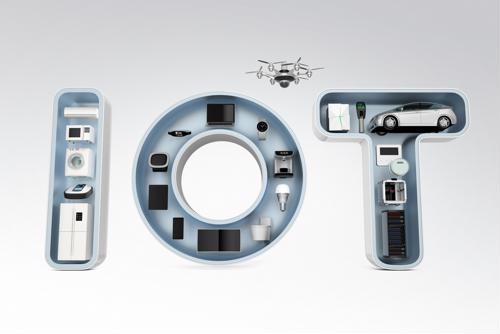
The State of IoT at the beginning of 2018
By Max BurkhalterJanuary 8, 2018
Companies continue to invest resources into Internet of Things enabled technology. It is no secret that IoT is one of the largest buzzwords being thrown around recently with subsections like IIoT beginning to take shape. As more and more devices continue to secure internet capability and transmit data, there is no reason to doubt that the IoT-enabled workplace will become more prevalent.
That said, every infrastructure upgrade faces hurdles and IoT aims to be a revolutionary transition. Perle has consulted two recent reputable studies into IoT implementation to access the current state of the market, as well as determine where the largest pain points still exist. The two studies in question are Vodafone's 2017/18 IoT Barometer and Cradlepoint's State of IoT 2018.
The future is bright
IoT adoption is moving along at a brisk pace. Vodafone's study found that the percentage of companies using IoT has more than doubled since the company began collecting this data in 2013. Currently, nearly a third of all industries report using IoT enriched technology. Transportation and logistics were the two industries to see the largest increases from 2016.
Cradlepoint's data, which surveyed 400 companies in various industries, found that IT services and retail/wholesale are the most IoT prolific industries (each at 10 percent total adoption). In general, most industries hovered around this point. The lowest highlighted was government with only seven percent of companies reporting IoT adoption.
According to Cradlepoint's survey, IoT applications being frequently adopted include network security, building security and data analytics. Programs like vehicle fleet management and connected health and telehealth care were among the least used.
Companies that have been utilizing IoT technology are increasing their usage. Only 15 percent of Vodafone respondents indicated that they had not increased IoT capacity within the last 12 months. According to Cradlepoint, around 27 percent of industries indicated that IoT growth would be the top initiative in 2018. Initiatives ruled more important included IT automation, security and big data analytics - which can all be determined as aspects of IoT.

Factors that are driving IoT growth
Vodafone findings indicated that the desire to increase efficiency was the primary driver for IoT adoption. Other factors included increasing revenue, reducing costs and managing risk. Cradlepoint's findings appeared to agree with this, adding that reducing IT complexity and increasing flexibility were also significant factors.
In addition, Vodafone found that those companies with far-reaching IoT infrastructure tended to be seeing more return on investment than those that had only adopted the technology in a limited capacity. Less than 30 percent of organizations with only 100 connected devices report significant ROI increase. Nearly 70 percent of institutions report substantial gains with over 50,000 connected devices. The indication here is that companies looking to invest in IoT should do so overwhelmingly in order to capture the largest share of upgraded efficiency and increased profitability.
"The security problem arises from a lack of skilled personnel within certain companies."
Cybersecurity and privacy concerns remain paramount
The largest barrier to IoT implementation across industries is security, particularly cybersecurity concerns. Organizations want to avoid large scale data breaches and IoT devices are regarded as vulnerable. However, Vodafone data showed that companies with appropriate expertise and widespread IoT policies felt confident.
The problem then looks to be a lack of skilled personnel within institutions. Organizations looking to expand into IoT should ensure that they have the correct specialists to provide a secure transition. This data suggests that IoT security problems have not arisen because of an innate flaw in the technology but rather a lack of proper implementation and network security maintenance.
Companies using IoT understand that it is not an isolated technology. Over 80 percent of Vodafone respondents indicated that they viewed IoT as crucial for data analytics, artificial intelligence and other important digital projects.
The common conclusion between studies is that companies properly utilizing IoT technology will continue to see their advantage grow over organizations that are unwilling to upgrade. In order to remain competitive, companies need to train their own workforce with IoT specialization, or put their trust in a partner like Perle to make sure their network infrastructure is ready and secure.
With the majority of industries continuing to embrace IoT-enabled technology, faster and more stable online connections will provide a boost to accuracy and efficiency. As more technology providers offer IoT-enabled smart products, Perle will be there to provide the critical network infrastructure required for uninterrupted data streaming. Connect with us today to learn more about how we can help your company prepare for an IoT-fueled future.



